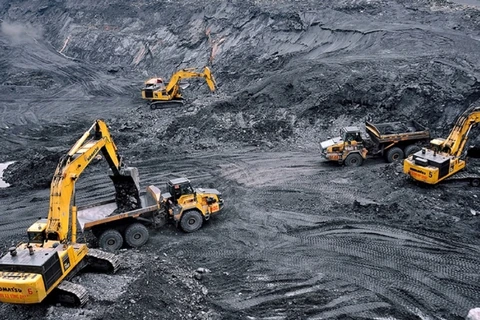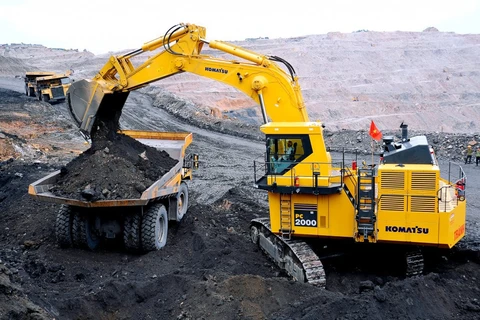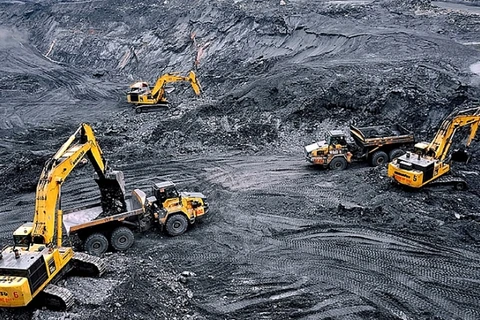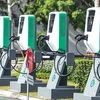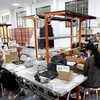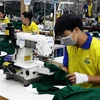
Hanoi (VNS/VNA) - Commenting on the draft Law on Geology and Minerals, the Chamber of Commerce and Industry of Vietnam (VCCI) proposed implementing auctions for mineral mining rights.
VCCI has just sent a document to the National Assembly's Committee for Science, Technology and Environment, commenting on the draft Law on Geology and Minerals.
In the written comments, VCCI is concerned that the regulation on areas where mineral mining rights are not auctioned will create a very large room for forms of “asking – giving” mechanism.
The agency cited a report which summed up ten years of the implementation of the 2010 Mineral Law by the Ministry of Natural Resources and Environment, indicating that out of a total of 421 mineral exploitation licences issued by this ministry, only six licences, accounting for just 1.4%, were granted through auction.
For licences issued by provincial people's committees, 394 out of a total of 4,279 licences were granted through auction, accounting for 9.2%.
This low percentage indicates that the majority of mineral mines are still licensed through “asking – giving” procedures.
The draft also stipulates areas where mineral mining rights will not be auctioned.
This regulation has very large implications, covering many important minerals, especially metallic minerals such as bauxite, titanium and iron ores, says VCCI in the comments. All of them are minerals with great commercial value.
Meanwhile, the effectiveness of an auction had been recorded in practice. The winning auction price of six licences issued by the Ministry of Natural Resources and Environment was 76% higher than the starting price.
Thus, VCCI believes that the benefits for the budget will be huge if expanding auction cases, while creating a transparent and healthy business environment for businesses.
Therefore, VCCI has requested the drafting committee to research and consider regulations in the direction that all mineral exploitation rights must be granted through auction or bidding.
Regarding financial issues, Vietnam's mineral sector has not been able to attract large, methodical investment projects in recent times, says VCCI.
The law has not had an appropriate protection mechanism for enterprises investing in large-scale projects, with long capital recovery times.
According to businesses, one of the biggest reasons limiting large investments in the mineral sector is policy risk.
Frequent and continuous policy changes in an unfavourable direction for mineral projects already in operation have had a very negative impact on Vietnamese business and investment environment.
"There are businesses reporting that their financial obligations to the budget have increased nearly three times compared to the regulations at the time of granting mineral exploitation licences, such as resource tax, mineral extraction rights fees, environmental protection fees for mineral extraction and mineral export taxes," VCCI says.
VCCI suggests looking into additional investment guarantee mechanisms for large mineral projects. The State ensures a stable investment environment in terms of financial obligations of businesses to the state budget.
In case of legal changes, investors shall not be subject to unfavourable changes throughout the entirety of the project, or for the first half of its duration./.
